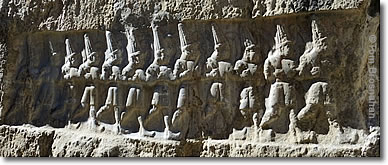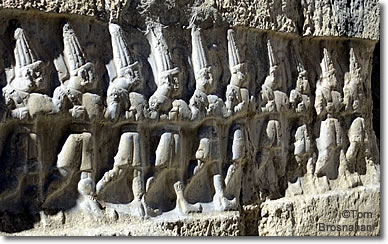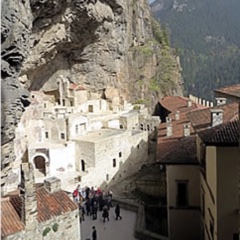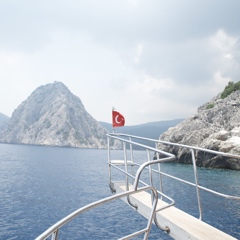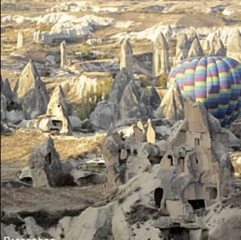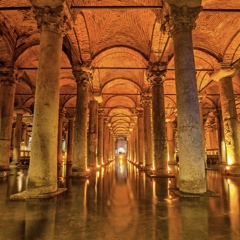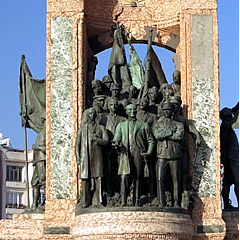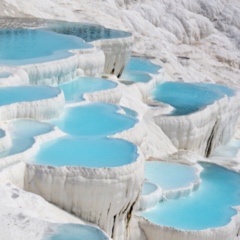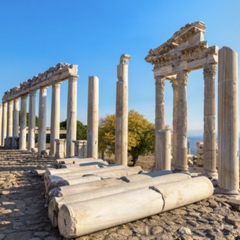Yazılıkaya (yah-zuh-LUH-kah-yah, Inscribed Rock in Turkish), 2.6km (1.6 miles) uphill from the entrance to the Hattuşa archeological site (map), was a sacred, memorial place for the Hittites.
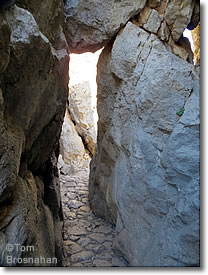 |
|---|
|
Natural defile at Yazılıkaya, obviously a mystic place… |
The dramatic rock formations that make up this open-air temple seem created by nature to serve as a place of worship and awe.
The Hittites saw the place as such, and carved bas-relief processions and images of deities into the vertical rock faces of the narrow spaces today designated Chamber A and Chamber B.
Use of the site probably began in the 16th century BCE (that is, 1600s BCE, about 3600 years ago), although what you see today is probably the result of modifications made in the late 13th century BCE, not long before the Hittite Empire began its steep and mysterious decline.
Twelve Hittite gods of the Underworld in procession at Yazılıkaya…
Chambers A and B were once closed off by walls and other buildings which now have disappeared. The walkways you see today are recent additions, as are all of the security cameras.
Before Hattusha was discovered by archeologist Ernest Chantre in 1893-94, the Hittites mentioned in the Bible were unknown to the modern age. Excavations begun in 1906 by the German Oriental Society brough to light the cuneiform-inscribed clay tabletsof the Hitite royal archive that gave archeologists and historians insights into Hittite religious beliefs.
The Hitit Yolu (Hittite Way) walking path, marked by signs (map), leads you uphill from the town of Boğazkale and the Hattusha archeological site to Yazılıkaya. From this height there are fine views over Hattusha, the town, the valley, and the mountains beyond.
Want to see lots more Hittite art? Visit Ankara‘s Museum of Anatolian Civilisations, informally called the ‘Hittite Museum.” More…
—by Tom Brosnahan
| Hattusha (Boğazkale) |  |



